
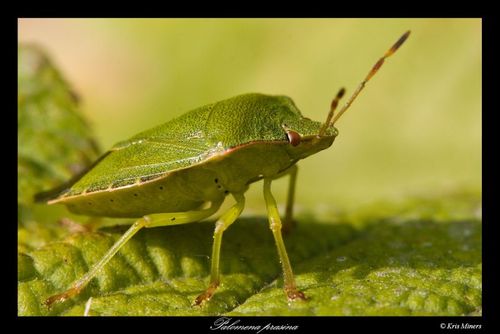
Green Shieldbug
This article has been written with digital cameras in mind, although lots of the info will still apply to anyone using film. I have covered a few simple steps, but of course there are many different ways of achieving great wildlife shots.
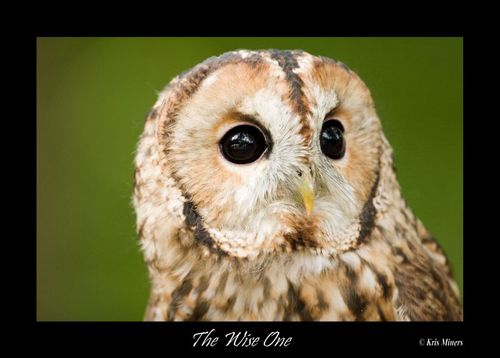
Tawny Owl
Wildlife photography is a wide a varied subject. This article looks at wildlife photography in the British Isles, but of course the rules are pretty much universal, and one factor which every wildlife photographer must come to terms with is "patience" you really do need the patience of a saint for some subjects, especially small birds and some insects. Many a wildlife photographer will opt for static subjects, such as flowers, but it’s only when you are out taking pictures that you will be aware of how much abiotic factors, such as wind really do affect your results. So even supposedly static subjects can be a challenge once combined with natural conditions. So, if you are lacking in the patience department, it may not be worth reading on, but if you have a love for nature, patience almost seamlessly follows.
Camera equipment
One of the common misconceptions is that you need to purchase hugely expensive equipment to be successful. The times I hear the phrase “I really should get a better camera”, or “I really need to get a better lens” after someone has seen a half decent shot taken with good kit. You can’t purchase expensive kit and become a great photographer overnight, it’s simply not possible. Now, anyone reading this who knows me is probably laughing as of now, as I do spend a lot of money on my equipment, but that doesn’t make me a better photographer than the next person. It just means I enjoy my hobby and want to buy what I perceive as suiting me best, but by no means do you have spend lots of money these days to get yourself a good little wildlife setup. Ultimately the cost is going to depend on what you want to shoot.
Small insects and flowers – you have two options here. A good DSLR (digital single lens reflex) and a macro lens. Cost from around £400. Or you could buy a compact point and shoot camera, as these often have fantastic macro modes, cost from about £100. If you have the budget the DSLR, it is going to benefit you and your photography, but it’s not a must.
Landscapes – ideally a DSLR and a wide angles lens cost from about £450 for a good setup.
General Wildlife – a point and shoot camera from about £100 will suffice for many situations.. If you want to use a DSLR then the cost will be from about £500.
Small wildlife – this is the combo that tends to cost most. Many compact cameras have impressive sounding zoom ranges, but digital zoom is of a bad quality, and you will find they are hard to keep still. I would always opt for a DSLR here, but the lens is more expensive part. Expect to pay at least £600.
It’s also very important to get a good tripod. Don’t skimp here, as without a good tripod you may often get soft (blurry) images.
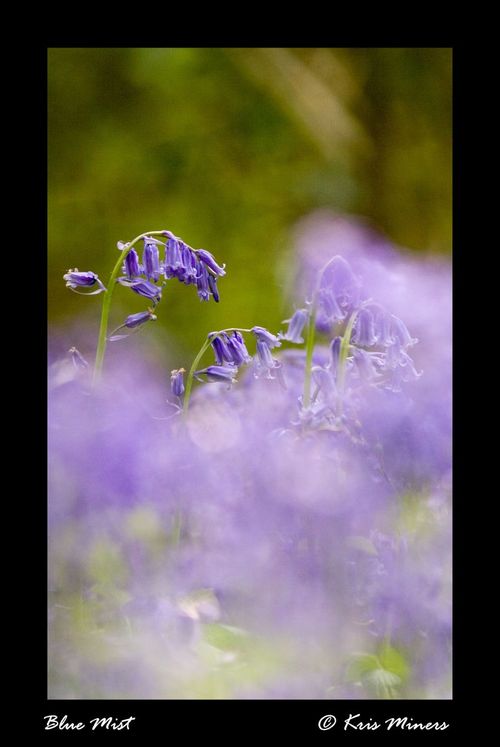
Bluebells
Photography can be an expensive hobby. If you want the most versatile of equipment, and best quality lenses then expect to pay a lot. For example a top of the range 600mm lens may cost £8000.00 alone. And some camera bodies are around the £5000.00 mark. As you can see, you pay as little or as much as you like, but you don’t need the most expensive gear to get that "special shot".
For me, I will always opt for a DSLR as they are more versatile and allow your hobby to grow with you, whereas you are committed to one camera and lens with a compact camera setup.
There are lots of other types of cameras and lenses on the market. I have only stated a few very basic options above to give you an idea, but prices will vary, often by a lot.
Early Mornings
As a general rule of thumb, early mornings are some of the best times of day to capture that "elusive shot". Birds, deer, and most other wildlife are more active in the early morning so set the alarm early and try your luck. You will also be blessed with a very special golden light which helps give your shots some ‘pop’. Also at this time of day you will see far fewer people which allows you to concentrate on the job in hand, and not being asked for advice on which camera Mary’s brother should buy for his next holiday.
Early evenings
In the summer the early evening is also a good time to take some images. This is the time that you will get some good views of small mammals and occasionally badgers. The light is also soft which is nice to work with.
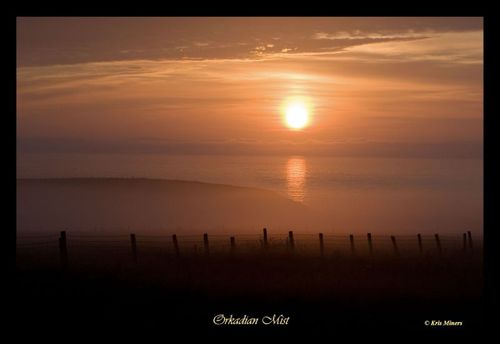
Sunset
Middle Day
During the middle of the day you will find the light to be quite bright and excellent for bringing out the detail in feathers and fur for example. But as a general rule after about 2pm in the summer the light becomes a little softer, this often proves to be the best time of day to take a few images.
Let wildlife come to you
One very good trick which I learnt very early on in life is to wait and allow wildlife to come to you. If you are walking around looking for your subject the chances are, if it has legs or wings you will scare it off before you reach it. Scout out potential areas and learn where the wildlife will be. Then the next time you arrive in the area you can sit quietly with your lens pointing in the general direction and wait for the action to happen. This also saves lugging around the equipment which can take its toll if you have a lot.
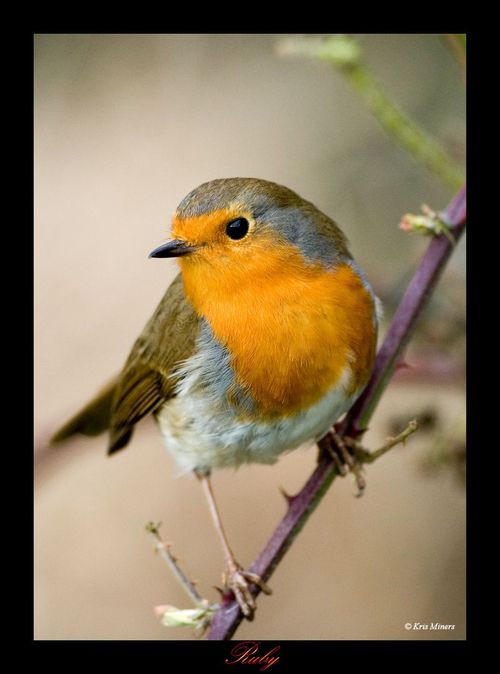
Robin
Stalking
Stalking is not only a method used when hunting. It is a method any good wildlife photographer will need to learn. Some of the best will be able to recognise signs of their intended quarry from foot prints in the mud, grass which has recently been disturbed, teeth marks on food sources, feathers, scratch pots, etc. There are many ways, but one which is often overlooked is the ability to see and recognise the habitat of the particular animal you are looking for. Maybe an ancient woodland as opposed to more modern woodland, maybe a particular flower, or tree. Some species of insect will only be found feeding on certain species of plant for example.
If you happen to spot your subject, it is important to move slowly and if you must look at them try to do so out of the corner of your eye, as looking direct into the face of any animal is a sign of aggression. The same as a person would feel if someone walked up to them giving them a glaring fixated look directly into their eyes.
These are all common sense really, but easily forgotten when on a photographic mission.
Once you have tracked down your quarry, set up, and are waiting to capture your images it’s important to have a non distracting background, well out of the way of any man made materials such as brick walls. If you have a cluttered background your image will appear flat with no point to draw your eye to. By having a nice background, some blue sky for example, you are isolating the subject i.e. a bird which will give the whole shot with much more impact. It’s also a good idea not to present your ‘bird’ bang in the middle of the shot, which at times is fine, but it’s always nice to give the subject a little room to move or some space to look into.
Try and expose the shots correctly there and then. This saves many hours in the digital darkroom later on. And for the cynics among you, using software to process images is not ‘cheating’ it is merely a more modern form of the old fashioned darkroom. Of course you can take it many steps further on a computer, but any true wildlife photographer does 95% of the work in the field and will only resort to minor changes, such as resizing and sharpening the image which is a process many cameras do inside the body, but you have far more control of the amount of sharpening you add by completing this step manually.
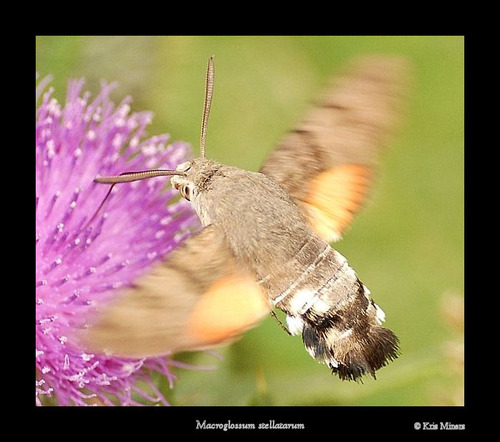
Hummingbird Hawkmoth
Kris Miners

Terry Penney on 08/07/10
Some very sound info for newbies & a little refresher for us 'oldies'
Terry Penney on 08/07/10
Some very sound info for newbies & a little refresher for us 'oldies'
Bera on 28/05/09
This is great. It's a shame more people aren't commenting on this.
Sham on 23/03/11
This has been very useful, thank you!